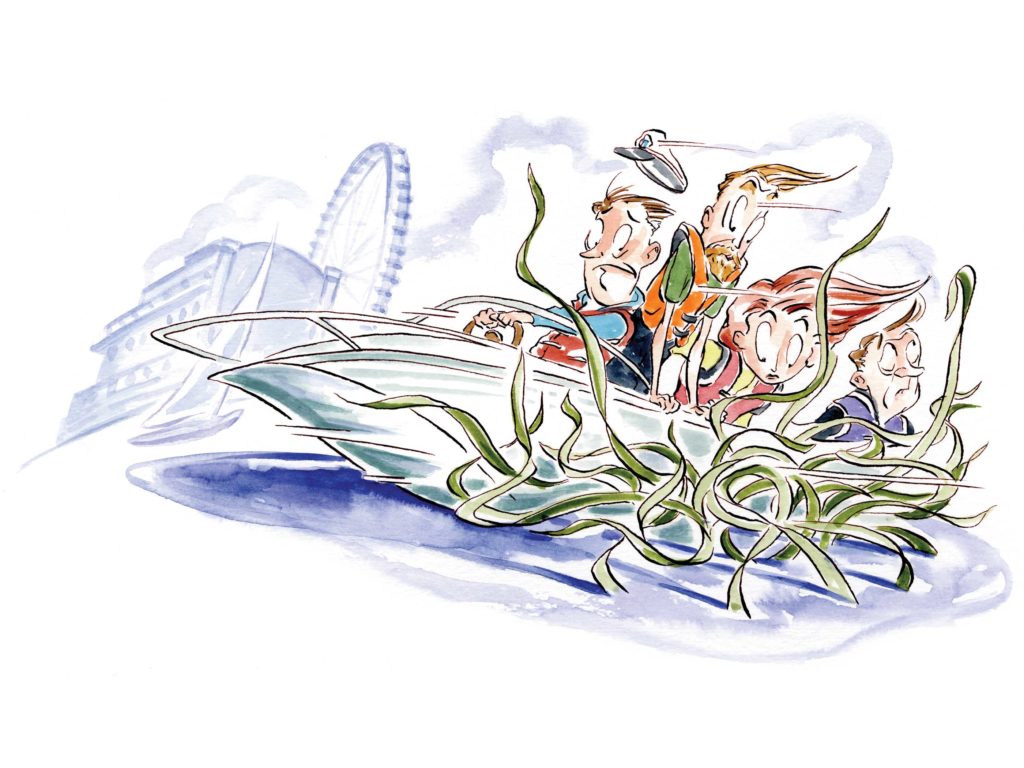
Consulting a depth chart was one of the first things I did as a new boater in 2015 after taking the US Coast Guard Auxiliary’s “About Boating Safely” course. After a season of cautiously boating on the Potomac River near Washington, DC, I was confident I knew the waterway and its hazards.
During the following season, new challenges presented themselves. The region witnessed a massive submerged aquatic vegetation (SAV) bloom, which many experts blamed on pollution and runoff, and it blanketed the river in a green carpet, resulting in many areas outside the channel becoming unnavigable, even at high tide. The thick vegetation ensnares the props of vessels not planing at high rpm. To complicate matters, some of the vegetation was only visible at low tide.
Fast-forward to the beginnings of a nice evening when my crew and I were heading to National Harbor for dinner. The draft of my Bayliner with the outboard down is only about 24 inches, so I can often comfortably navigate outside the channel. However, while driving a known route outside the channel and on plane, I hadn’t accounted for the SAV bloom and falling tide.
Water that was usually free and clear of obstructions now looked like asphalt in the shimmering moonlight. I slowed before a crewmember shouted, “No, gun it!” Realizing his point, I throttled to full power. Thankfully, we sliced through the vegetation like butter and made it safely. If I had slowed, we would have become stuck in the vegetation. If the tide was even lower, this maneuver could have resulted in injury or damage. We were lucky. It was a mistake to navigate this route at night during low tide.
I now stick to the channel while night boating, and I am hypervigilant of the tide’s movements. (I use a free app called Ebb Tide to track the tide’s status.) This experience taught me to always be cognizant of changing water hazards, and to exercise caution and safety at all times. Just because you have successfully navigated a route before does not mean there is no future danger from changing tides, water conditions and new obstructions.
Anthony Harper
Washington, DC
Wanted: Your Stories
Share your boating mistakes and mishaps so that your fellow boaters might learn from your experience. Send us your first-person accounts, including what went wrong, what you’d do differently, your name and your city, to editor@boatingmag.com and use “ILAB” in the subject line. If your story is selected for publication, we’ll send you a $100 West Marine Gift Card!”









